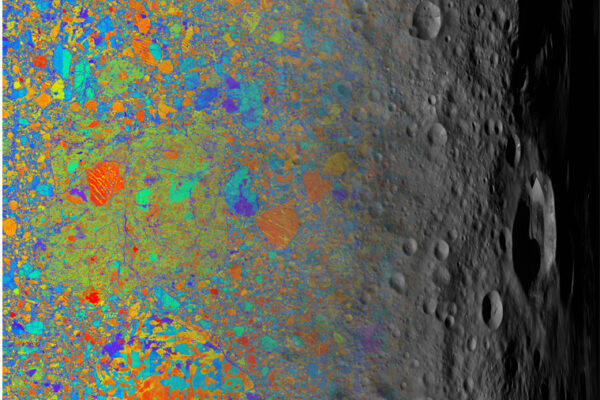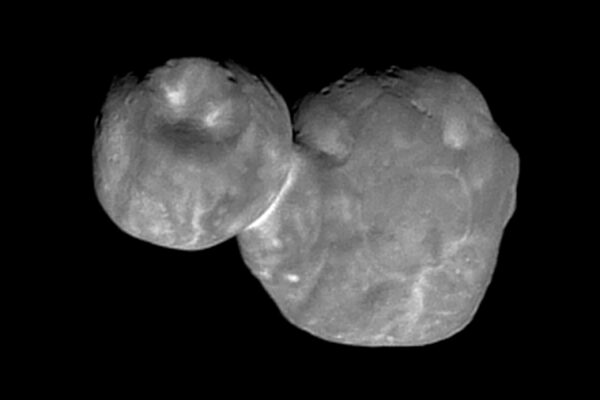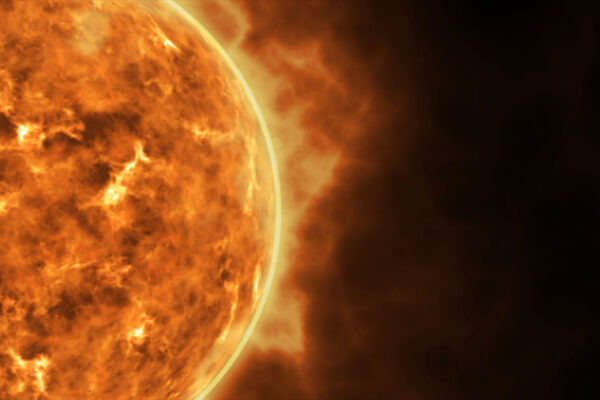Ancient micrometeoroids carried specks of stardust, water to asteroid 4 Vesta
Researchers at Washington University in St. Louis are the first to study presolar materials that landed on a planet-like body. Their findings may help solve the mystery: where did all the water on Earth come from?
Arrokoth close-up reveals how planetary building blocks were constructed
William B. McKinnon, professor of earth and planetary sciences in Arts & Sciences at Washington University in St. Louis, led one of three new studies that together provide a far more complete picture of the composition and origin of Arrokoth. The new research published in Science points to the resolution of a longstanding scientific controversy about how such primitive planetary building blocks called planetesimals were formed.
Washington University physicists analyze solar wind samples from Genesis mission
How did our Solar System evolve? WUSTL physicists and a large team of colleagues marked the beginnings of that odyssey by examining samples of solar wind for neon and argon, two abundant noble gases. The work was published in the Oct. 19, 2007, issue of Science.
Washington University scientists analyze solar wind samples from Genesis mission
As reservoirs of valuable information go, nothing beats the sun. This sphere of heat and energy holds 99.9 percent of the solar system, saved in all original proportions after planets and meteorites formed. Analyzing the mix of hydrogen, oxygen and noble gases found in the sun can answer one of the biggest questions of the universe: How did our solar system evolve? Scientists at Washington University in St. Louis and a large team of colleagues marked the beginnings of that odyssey by examining samples of solar wind for neon and argon, two abundant noble gases. The work was published in the Oct. 19, 2007, issue of Science.
‘Real’ stardust from NASA mission lands on campus
Stardust, the NASA spacecraft mission, was given that name in hopes that the seven-year journey to capture comet samples would bring back to Earth, well, stardust. In an article in a special issue of the journal Science, Washington University researchers are the first to report that a sample they received from the mission actually does contain stardust — particles that are older than the sun.
Washington University lab first to find ‘real’ stardust from Stardust mission
VIDEO AVAILABLE: Stardust, the NASA spacecraft mission, was given that name in hopes that the seven-year journey to capture comet samples would bring back to Earth, well, stardust. In an article coming out in the Dec. 15, 2006, issue of the journal Science, researchers at Washington University in St. Louis are the first to report that a sample they received from the mission actually does contain stardust — particles that are older than the sun.
WUSTL researcher available to discuss Stardust mission find
Frank J. Stadermann, Ph.D., senior research scientist in physics in Arts & Sciences at Washington University and a sample adviser for NASA’s Stardust mission will discuss his research team’s significant find from the Stardust mission, the first U.S. space mission dedicated to the exploration of a comet, and the first robotic mission designed to return extraterrestrial material from outside the orbit of the Moon.
Washington University physicists begin measurement of Genesis samples
USAF 388th Range SqdGenesis was recovered in the Utah desert with fears that all data were lost.Scientists at Washington University in St. Louis have begun to measure noble gases present in the solar wind delivered to Earth by the Genesis spacecraft, the first sample return mission since the lunar Apollo missions in the late 1960s and early 1970s.
First silicate stardust found in a meteorite
In the March 5 issue of Science, Ann Nguyen of Washington University in St. Louis and her advisor, Ernst K. Zinner, Ph.D., research professor of physics and of earth and planetary sciences, both in Arts & Sciences, describe nine specks of silicate stardust — presolar silicate grains — from one of the most primitive meteorites known. This is the first reported finding of silicate stardust from a meteorite.



